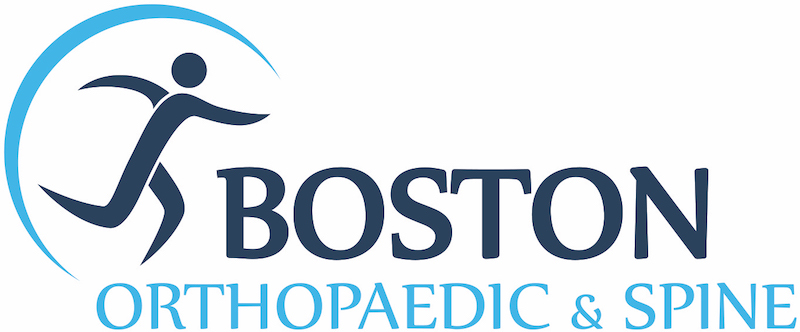The Hand and Wrist Center
Expertise in Hand/Wrist Conditions & Procedures
BACKGROUND
If you have a hand or wrist injury, you want an expert taking care of you. After all, we use our hands for almost everything we do!
At Boston Orthopaedic & Spine, our hand specialists have the skill, training, and expertise to treat all types of hand and wrist pain. From simple to complex problems, our board-certified, fellowship-trained hand surgeons specialize in what hurts.
COMMON HAND CONDITIONS
There are a number of conditions that can make everyday tasks challenging or painful. Whether it’s brushing your teeth, picking up your child, or carrying groceries, the pain does not have to last. Some of the most common conditions include:
- Hand/wrist arthritis
- Carpal tunnel syndrome
- Tendinitis
- Trigger finger
- Ganglion cysts
- Tumors
- Dupuytren’s disease
- Traumatic injuries and fracture
- Sprains and strains
- Fingertip injuries
- Nerve injuries or entrapment
- Tendon lacerations
Whether you have had pain for years or were recently involved in a fall or accident, we can help.
TREATMENTS
Most patients do not need surgery to manage their hand and wrist pain. In many cases, activity modification, injections, therapy, splinting and education can treat the problem. When surgery is required, our highly-skilled team uses the latest techniques to help you heal quickly.
Common Causes of Hand and Wrist Pain
There are a number of hand and wrist conditions that can make everyday tasks challenging or painful. After all, we use our hands for almost everything we do! At Boston Orthopaedic & Spine, our hand specialists have the skill, training, and expertise to treat all types of hand and wrist pain.
Hand and Wrist Anatomy
- The hand consists of several small bones called phalanges, metacarpals, and carpals.
- The wrist is where the radius and the ulna (the two bones of the lower arm) meet at the hand.
- Between these bones is capsule, cartilage, and ligaments that allow for movement.
The carpal tunnel is an area where several tendons and nerves pass through the wrist. In carpal tunnel syndrome, these nerves and tendons are compressed.
Another common problem is pain at the base of the thumb, usually later in life, from arthritis. This is called basal (thumb) joint arthritis and can be treated with splints, injections, and reconstructive surgery, if needed.
Other common problems include bone fractures, dislocations, and inflamed tendons and ligaments from overuse.
SYMPTOMS OF HAND, FINGER AND WRIST PAIN
Symptoms of hand, finger or wrist pain depend on the type of injury and mechanism of injury. The symptoms commonly include pain during use, swelling, and/or difficulty moving the affected area.
Treatment for hand, finger and wrist pain includes: over-the-counter pain medication, rest, ice, and elevation. In more severe injuries, immobilization or surgery may be necessary.
COMMON CAUSES OF HAND, FINGER AND WRIST PAIN TREATED AT Boston Orthopaedic & Spine
ARTHRITIS
Arthritis is painful inflammation and stiffness of the joints, which can be caused by many types of degenerative or inflammatory conditions. There are many types of arthritis, including osteoarthritis, rheumatoid, post-traumatic, septic, and gout. Arthritis symptoms often include swelling, tenderness, sharp pain, stiffness, and sometimes fever and chills.
Basal joint (thumb) arthritis is a common type of osteoarthritis that occurs as a result of the degeneration of the cartilage that surrounds the thumb joint. Symptoms include pain, swelling, and difficulty with gripping or pinching motions (such as turning a key or opening a jar). Treatment includes anti-inflammatory medicines, splinting the thumb, and injections. Surgery is also a treatment option for severe cases of basal joint arthritis.
CARPAL TUNNEL SYNDROME
Carpal tunnel syndrome is caused by a pinched nerve (median nerve) in the wrist that leads to radiating pain, weakness, or numbness in the palm side of the hand, wrist or fingers. Many people describe symptoms that improve from ‘shaking out the hand’. Treatment includes anti-inflammatory medicine, splinting the wrist, or corticosteroid injections. If symptoms do not improve with this treatment, surgery may be necessary to decompress the nerve, relieve the symptoms, and restore function.
FINGER DISLOCATIONS
Dislocation occurs when the bones in a joint are forced out of their natural position by a fall or rapid twisting injury. Finger dislocations are sometimes referred to as ‘jammed fingers’. Symptoms include obvious deformity of the affected area, swelling, pain, and difficulty moving the joint.
Dislocations are serious injuries that require immediate medical attention. First aid treatment includes removing any rings or other jewelry, applying an ice pack, and elevating the area higher than your heart.
SPRAINS & STRAINS
Ligaments are tissues that connect two bone. Tendons are tissues that connect muscle to bone. In a ligament injury, the tissue can become overstretched, incur small tears, or tear completely. Symptoms of a ligament injury include swelling, pain, and a feeling of instability in the joint. In a tendon injury, the tissue can become overstretched, develop micro-tears, or rupture. Symptoms of a tendon injury include inflammation, tenderness, and pain that gets worse during use of the affected area.
FRACTURES
A fracture is a break in a bone. Broken bone symptoms include pain (intensified when the area is moved or pressure is applied), swelling, bruising, and loss of function. Fractures may also cause the area around the bone to appear distorted or deformed, especially in open fractures where the bone protrudes from the skin.
A distal radius fracture is a break in the arm bone (radius) that connects to the hand at the wrist joint. Falls or other accidental trauma from sports or car accidents can cause this type of fracture. Symptoms include pain, deformity, swelling, and inability to move the joint. Treatment includes immobilization in a splint or cast, and in some cases, surgery.
A scaphoid fracture is a break in the scaphoid, one of the small bones of the wrist. Scaphoid fractures are commonly caused by accidents in which the hand reaches out to break a fall. Symptoms include swelling and pain that worsens when gripping an object. The pain is maximal between the base of the thumb and the wrist. Treatment depends on where the fracture occurs on the scaphoid bone, and is based on how well the bones are aligned and where in the bone the fracture occurred, but can include casting or surgical fixation. The scaphoid has a complex blood supply which often prolongs healing.
FINGERTIP INJURIES
Injuries to the tip of the finger can occur from work, play, or trauma. These injuries involve a sharp cut, a crush, or a combination of these injury types. They often involve the skin, fingernail, nailbed, and bone. Treatment depends on the level of the injury and the health of the injured tissue. It is best to seek medical evaluation to determine whether surgery is required.
GANGLION CYSTS
Ganglion cysts are fluid-filled, benign tumors (cysts) that develop on the outside of a joint or tendon. They were historically called “Bible cysts” because treatment was to hit them with the largest book in the house, the Bible. These cysts develop under the skin as small sacs filled with a clear, jelly-like substance that may feel spongy or firm to the touch, depending on size. They are managed with rest, anti-inflammatory medications, aspiration, and in some cases, surgical removal.
DUPUYTREN’S CONTRACTURE
Dupuytren’s contracture is an abnormal thickening of the tissue just beneath the skin. This thickening occurs in the palm and can extend into the fingers. Firm pits, bumps and cords (thick lines) can develop and cause the fingers to bend into the palm. Symptoms include a hard lump at the base of the ring and pinky fingers, a thick cord across the palm, and difficulty bending the fingers or flattening the hand. The cause is unknown, but it is most common in men over the age of 40 with northern European descent. Treatment includes physical therapy, immobilization, massage, injections, and surgery.
MALLET FINGER
Mallet finger occurs when the tendon that runs along the top of a finger is injured or torn. Symptoms include pain, tenderness, swelling, and inability to actively extend the finger joint. Treatment for mallet finger includes ice, immobilization with a splint, and anti-inflammatory medications. In rare circumstances, surgery may be necessary.
NERVE INJURY
A nerve injury can occur when the finger, hand, or wrist is cut, overstretched, crushed, or burned. Motor vehicle accidents, work injuries, and falls are common causes of nerve injury. Symptoms include numbness and difficulty moving the affected area. Treatment depends on the severity of the injury, and may include rest, immobilization, physical therapy, and in some cases, surgery.
TENDONITIS
Tendonitis is inflammation of the tendons, the tissue that connects muscle to bone. Tendonitis is caused by overuse (repetitive motion) or sudden injury. Tendonitis symptoms include pain in the tendon area, swelling, and loss of motion.
De Quervain’s tendonitis is a form of tendonitis that affects the tendons in the thumb side of the wrist. Symptoms include pain, swelling, and difficulty gripping with the hand. Treatment includes rest, ice, immobilization, and anti-inflammatory medications. In some cases, corticosteroid injections or surgery may be advised.
TRIGGER FINGER
Trigger finger is a condition in which the tendons in the fingers or thumb ‘catch’ or become stuck in a bent position. Symptoms include pain, a popping sensation when using the affected finger(s), and stiffness. Treatment includes immobilization, anti-inflammatory medication, restricting the activities that caused the repetitive stress, and in some cases corticosteroid injections. If the symptoms persist, surgery may be advised to release the snapping tissue.
Surgery - Hand and Wrist
After consideration of all treatment options, a decision on surgery may be made. If you and the surgeon decide to proceed with surgery, a surgical booking form and consent will be filled out in the office. A tentative decision on the planned anesthesia will be discussed with the doctors at this time. Scheduling of the surgery is done with Lori. The extent of the pre-operative work-up depends on whether or not the Anesthesia Service will be involved with the case.
If the condition being treated requires an urgently scheduled surgery then all efforts will be made to get the surgery done in a timely fashion. Urgent surgery may not allow for choice of day or start time. Elective surgery allows for flexibility of date and start time. Our staff will do all that is possible to make the pre-operative planning go smoothly.
Patient Education - Hand and Wrist
What makes the hand so unique is the complicated anatomy and physiology that allow the hand to function. The combination of structural components – bone, joints, tendons, nerves, blood supply, connective tissue and skin, and the control needed for movement and sensation, creates the unique organ which represents our hand. Because hand use requires all parts to be functioning together, it is the precise interplay of these parts that creates the complexity of the hand. Understanding and treating such a complex organ lead to the speciality of Hand Surgery.
The hand can suffer from a wide variety of pathology. Hand pathology may have many different origins including congenital, traumatic, degenerative, acquired or neoplastic. As Hand Surgeons, Dr. Stirrat and Dr. Green have expertise in diagnosing and treating all the problems involving the different structures of the hand, wrist, forearm and elbow. The term “hand surgeon” does not mean that the doctors only treat conditions with surgery. The majority of hand conditions are treated by non-operative means. It is through a combination of evaluation and diagnosis that treatment decisions are made. Frequently when patients come to the office, they will have already researched their conditions and are seeking advice about the most appropriate treatment.
Our Team
Jennifer B. Green, MD
Learn More
Jinsil K. Sung, MD
Learn More
Take the First Step
Get an accurate diagnosis and treatment plan from our expert physician team.



